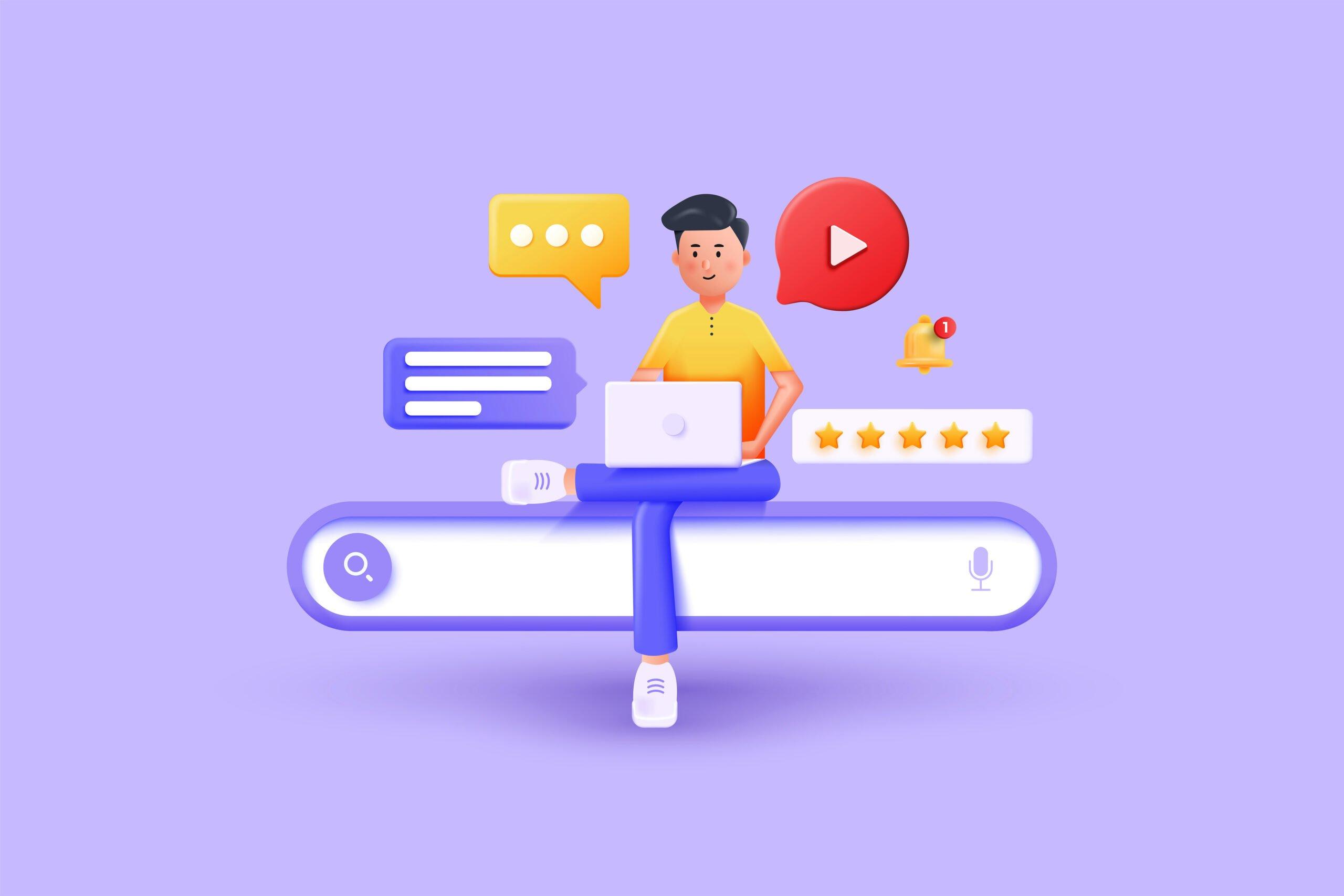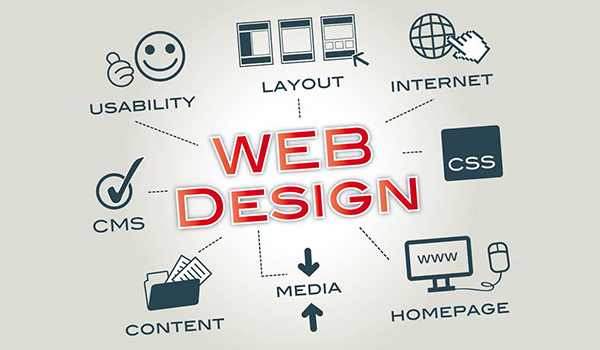The Best Types of Website Design to Boost Individual Experience and Involvement
In the ever-evolving landscape of digital interaction, the efficiency of website design significantly impacts individual experience and involvement. Numerous design strategies, such as minimal, receptive, and interactive layouts, each deal unique benefits that can satisfy diverse customer needs. Comprehending which kinds of Web layout finest offer these goals can be pivotal for organizations intending to boost consumer satisfaction and retention. The concern continues to be: which design aspects genuinely reverberate with customers and foster meaningful engagement? The expedition of these principles exposes important understandings that might redefine your technique to Web layout.
Minimalist Web Layout
As digital landscapes end up being significantly messy, minimal website design has actually emerged as an effective technique to boosting customer experience. This style philosophy focuses on simpleness, concentrating on important components while getting rid of unnecessary disturbances. By using adequate white space, straightforward navigation, and a restricted shade scheme, minimalist layout cultivates clarity and routes user interest to key material.
The core concept of minimalist website design is to produce a seamless communication for individuals. By minimizing cognitive tons, customers can swiftly comprehend info without feeling overwhelmed. This direct technique not just boosts use however also encourages engagement, as visitors are most likely to discover a site that is aesthetically enticing and very easy to navigate.
Additionally, minimalist layout frequently emphasizes typography and images, utilizing these elements strategically to convey messages effectively. This concentrate on vital parts can improve brand identity and produce a memorable user experience. Essentially, minimalist website design is not just a trend; it is a thoughtful method that acknowledges the importance of user-centered style. By removing away peripheral elements, designers can produce an extra appealing, effective, and pleasurable Web experience for all individuals.
Receptive Website Design
In today's diverse digital atmosphere, receptive Web style has actually become vital for developing a smooth user experience across a wide range of tools. As users access websites on smartphones, desktops, laptops, and tablets, the ability of a website to adapt its format and web content to different screen dimensions and resolutions is essential.
Responsive Web design uses adaptable grids, pictures, and CSS media questions to ensure that Web material exists ideally, regardless of the tool made use of. This strategy not only enhances the aesthetic charm of a site yet additionally dramatically enhances functionality. Users are more probable to engage with a website that uses a regular experience, as it gets rid of the irritation of having to zoom in or scroll exceedingly.
Additionally, online search engine, including Google, focus on mobile-friendly sites in search positions. By taking on responsive layout, services can boost their exposure and reach a wider audience. This strategy likewise simplifies website upkeep, as a single variation of the website can deal with all tools, lowering the demand for numerous variations. In recap, receptive website design is a fundamental method that boosts user experience, involvement, and general satisfaction.
Interactive Web Design
Responsive website design prepares for boosting user experience, however interactive Web layout takes this a step even more by engaging individuals in a much more vibrant means - Aligned Position Web Design. By incorporating elements such as animations, clickable prototypes, and real-time comments, interactive Web style astounds customers, attracting them right into a richer surfing experience
This method not just fosters engagement but also encourages users to check out content actively as opposed to passively eating it. Techniques such as gamification, where individuals make benefits for completing tasks, can substantially improve the time invested on a site and boost total satisfaction. Interactive features can simplify complex information, making it more enjoyable and absorbable.

Incorporating interactive layout elements can likewise bring about higher conversion rates, as customers are more likely to involve with a website that actively includes them. Aligned Position Web Design. Inevitably, interactive Web style changes customer experiences right into memorable journeys, making certain that site visitors return time after time
Apartment Style
Identified by its minimalistic strategy, level layout highlights simplicity and performance, removing unneeded aspects and concentrating on crucial features. This design philosophy focuses on use, ensuring that users can browse user interfaces effortlessly my link and efficiency. By utilizing a tidy aesthetic, level design removes the mess commonly found in extra ornate designs, therefore improving individual emphasis on content and functionality.
The trademark of level style lies in its use of vibrant shades, easy typography, and geometric shapes. These aspects contribute to an aesthetically enticing interface that is both modern and friendly. In addition, flat layout promotes a sense of quality, permitting individuals to discern important activities and info without diversion.
Additionally, level layout is particularly effective in receptive Web style, as its simpleness converts well across different gadgets and display sizes. By focusing on necessary features, flat style not just fulfills user needs however additionally urges smooth interaction, making it an important component of effective Web design methods.
Flexible Website Design
Flexible website design customizes the customer experience by producing several repaired layouts customized to various screen sizes and gadgets. Unlike responsive layout, which fluidly changes a single layout, adaptive style employs distinctive formats for details breakpoints, making certain optimum discussion on various platforms. This strategy permits designers to concentrate on the unique features of each tool, boosting usability by supplying exactly what individuals require based upon their context.
Among the key advantages of flexible website design is its capability to enhance tons times and performance. By offering tailored content and images that fit the customer's device, sites can reduce data usage and boost loading speeds. This is particularly valuable for customers with slower connections or restricted information plans.

Additionally, flexible layout assists in a more regulated and constant branding experience. Considering that developers develop multiple layouts, they can guarantee that the aesthetic components align with the brand name's identification throughout various systems - Aligned Position Web Design. This causes a cohesive customer experience, improving interaction and advertising customer retention
Conclusion
In final thought, the assimilation of minimal, receptive, and interactive website design principles dramatically boosts user experience and interaction. Minimal layout fosters clearness and emphasis, while receptive layout ensures versatility across numerous devices, promoting ease of access. Interactive style mesmerizes individuals with dynamic elements, motivating exploration and personalization. Collectively, these design approaches add to the creation of user-friendly atmospheres that not only enhance fulfillment however likewise drive higher conversion rates, emphasizing their critical importance in modern Web style techniques.

Minimalist design fosters clarity and focus, while responsive style makes sure flexibility throughout numerous tools, advertising accessibility. Collectively, these design approaches contribute to the production of user-friendly useful source environments that not explanation only improve satisfaction but also drive greater conversion prices, emphasizing their critical importance in modern Web layout methods.